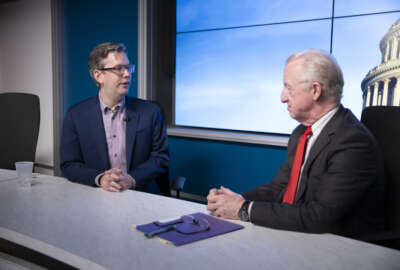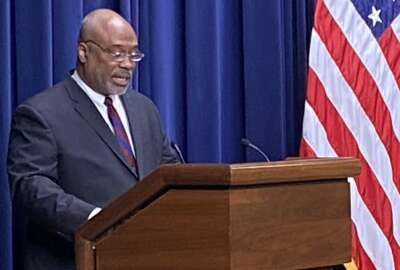 Exclusive
Exclusive Bureau of Fiscal Service sees potential for blockchain, AI in new pilot programs
The Office of Financial Innovation and Transformation sees itself as a catalyst among agencies, one that is “thinking about the future.”
Digital workforces can improve financial management and federal agencies’ customer service. But it’s uncertain exactly how.
Within the Treasury Department, the Bureau of the Fiscal Service’s Office of Financial Innovation and Transformation (FIT) has launched two pilots in response to this question: one on distributed ledger technology, or blockchain, and another on artificial intelligence. As Adam Goldberg, FIT’s executive architect, told Federal News Network’s Jason Miller, he thinks there needs to be an agency that is “thinking about the future.”
“Where we sit within the government at Treasury, there’s many opportunities to really explore how an agency interacts with us, and how that might change how citizens interact with us, and how that may change and how any other entity like a bank is also interacting with Treasury,” Goldberg said on Federal Monthly Insights — Intelligent Automation.
When it comes to using blockchain, Goldberg said that about half the time FIT has pursued the application proactively. Half the time it’s responding to possible uses which present themselves.
“I think the work that we’re starting right now in the chat bot arena — that was really a partnership with others who came to us and said, ‘Would you like to partner with us? We’re really interested in applying this technology to our call centers. And how could we go about doing this?’” he said on Federal Drive with Tom Temin.
Goldberg said FIT likes to consider itself a catalyst for other agencies to take up these sorts of projects, whether with blockchain, AI or robotics. Jennifer Hill, FIT’s Management and Program Analyst, described the AI pilot as more of a project to both improve and automate customer experience. She said FIT is trying to keep pace with the private sector and modernize the interaction people have with Treasury.
Related Stories

OFPP’s Wooten pressing the levers to change the tools, rules, talent pools of federal procurement
In addition, she said FIT is trying to be more informative and user-friendly on the website from the start, reducing the need for people to call in the first place. The technology can be used for the web or on phones.
For the blockchain pilot, Innovative Program Manager Craig Fischer said FIT is on its third iteration. The first was a look at tracking mobile phones, then they examined tracking software licenses. He said what they found was that as the technology is applied on a grander scale across government, the challenges mount.
“So this next iteration of blockchain is not only trying to look at it from sort of a smaller, yet sort of a cross agency use case but also looking at it in terms of trying to understand what value can this actually give the transfer value,” Fischer said. “In fact, this is the first financial management sort of core-use case that we’re looking at when it comes to blockchain technology.”
FIT partnered with the National Science Foundation to see if blockchain can improve the grant payment process, more specifically to improve the visibility of where payments flow. If it goes as intended, Fischer said this could reduce the reporting burden of recipients.
“So in the place of money in this situation, we would be using a token. And that’s kind of how blockchain works — you digitally represent something of value,” he said. “In this point, we’d be representing sort of a payment obligation for work performed within some sort of a grant. But as long as that token stays with an ecosystem, that we’re all part of, we can see those transactions occurring in real time.”
Copyright © 2025 Federal News Network. All rights reserved. This website is not intended for users located within the European Economic Area.
Amelia Brust is a digital editor at Federal News Network.
Follow @abrustWFED




